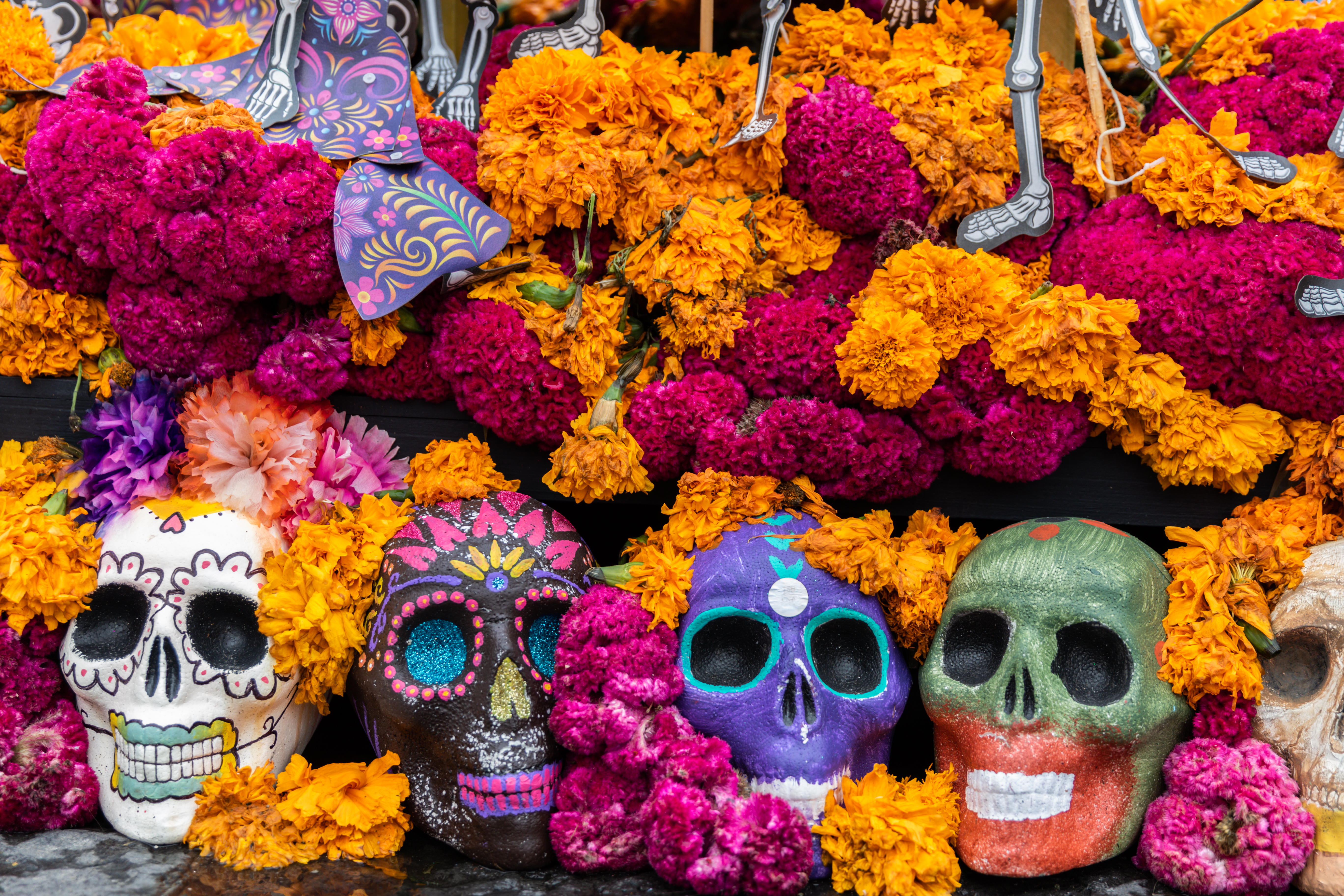No surprise that the October sun is shining in the sky above Southern California. A hundred feet above the freshly mown fragrant green grass, a gentle breeze that started somewhere out in the Pacific has gained force crossing the tarmac at the San Diego International Airport and made its invisible run up the hill from the sea, cresting in the city's Mission Hills neighborhood, a canopy of the towering eucalyptus trees planted decades before waving overhead.
The high-pitched squeaks of children playing in the park's playground bounce off the walls of the adjoining Grant TK-8 school, echoing across the expanse to every corner of the adjoining Pioneer Park.
In summertime, hundreds, sometimes thousands of people arrive at the park, setting up cunningly made folding tables and soft chi-chi blankets, sipping chardonnay as a band plays at a weekly concert in the park. Some of the tykes, trailing oh-so-patient parents, inevitably make their way away from the synth-drenched cover songs and down a lazy slope to the park's southeast corner, where a surprise silently awaits, a series of granite and gray headstones. Inevitably, the children, unaware of their playthings' origins, camber over and climb on the macabre tableau, naively unaware of where, exactly, they are.
Google maps calls Pioneer park a "city oasis of lawns, paths and broad trees." Local historians will tell you, though, that there are hundreds and hundreds — well more than a thousand — corpses lying just feet beneath the sod surface.
A short distance back up the hill rests a rather imposing bronze plaque, which gives lie to the idyllic setting. Here Google gave up the ghost: it's the Calvary Cemetery Memorial. More than 1,600 names cover the plaque, the monikers of the park's permanent residents, buried beneath.
The "pioneers" in Pioneer Park, you see, are still here — a short distance below all those tiny running feet are hundreds of graves, none of them marked any longer.
The tombstone memorial down the grade serves as a reminder of what was. The park was once consecrated ground, among San Diego's earliest cemeteries, and dates back to the 1800s. According to the San Diego History Center, 10 acres of land was set aside by city officials in 1870 for a burial ground, with half being dedicated to Protestants and the other half to Catholics. Legend has it that was Kate Sessions, the mother of Balboa Park who operated the nearby Mission Hills nursery, who, hearing of a plan for a brick wall to bisect the interred by religious affiliation, instead suggested the planting of those now mighty eucalyptus trees.
Protestants never took the city up on their offer, according to the history center, instead opting for the much larger Mount Hope Cemetary to the east and other options. The balance became the Calvary Cemetery, which soon lost out in interest to another much larger burial plot, the Holy Cross cemetery, which "opened" in 1919. Within 20 years, the cemetery began a slow descent into disrepair. At about that time, 1939 or so, a blaze at the small caretaker's shack on the grounds took with it most of the burial records, and all the "unmarked graves lost their identity," as the historical society puts it.
Time and vandalism took their grim toll, and more than 50 years ago, in 1970, the city removed most of the grave markers — some bearing the proud names of San Diego founders, like Bandini and Couts, and the headstones unceremoniously ended up in a ravine in the massive Mount Hope cemetery where they still remain, with a sprinkling left behind on the bottom of that hill at Pioneer Park.
Old Town's "Holy Field"
Remarkably, there's another spot not far away, down a much bigger hill to the west, all the way down Juan Street to San Diego's Old Town, where many San Diegans are also unwittingly stepping over graves.
Many passers-by take time to visit the rather rustic El Campo Santo (The Holy Field) cemetery, nestled between the Tahona mezcal bar and a fiduciary's office on San Diego Avenue, just steps down the street from the Whaley House, notorious as San Diego's most haunted home (and the sight of more than one public execution).
'Truly this is a great mystery'
A notice posted a kiosk located inside Old Town's El Camp Santo cemetery
Many of the graves here are marked by simple white wooden crosses. All buried here were interred between 1849, when Juan Adams was laid to rest, and 1880. Some of those buried at the site were sent there after serving death sentences.
"Antonio Garra, executed for murder in 1852, stated as he stood by his open grave in the cemetery, 'Gentlemen, I ask your pardon for all my offenses and give mine in return,' then kissed a crucifix, and met his fate," the history center site states.
Other notables interred here include "Santiago 'Yankee Jim' Robinson was executed after being tried for stealing a boat, but was convicted of stealing a horse, due to technicalities."
Step outside the adobe brick walls and all seems at peace, the bustle of Old Town mostly to the west. A look down at the sidewalk, though, yields a strange sight: small round metallic markers affixed to the street, with SUVs and sedans flying by unknowingly driving over the dead. Each marker — stamped, not surprisingly, with the words "Grave Site" — bears witness to a burial site, the cemetery's perimeter being shrunk to accommodate the nearby roadway.
It's believed that more than a dozen, but not more than 20 souls have been ignominiously preserved in such a manner, their locations detected in 1993 with the aid of ground detecting radar.
"One discovery of great significance was the location of 10 mass graves in and out of the cemetery," reads a notice posted at a kiosk nearby. "We were unable to find out information about the people interred. Truly this is a great mystery."
San Diego News
San Diego's Other Significant Cemeteries
Mount Home Cemetery, Mount Hope
- San Diego's largest graveyard is so massive that a trolley line runs through it. Legend has it that local bigwigs riding the light rail for an opening ceremony spotted the headstones dumped so unceremoniously from Calvary Cemetary, prompting a second memorial, this one in Mount Hope
- Opened in 1869, Mount Hope's sprawling 115 acres boast the remains of some of San Diego's most famous residents, including crime novelist Raymond Chandler, San Diego founder Alonzo Horton and Kate Sessions herself
Holy Cross Cemetary, Chollas Creek
- Many drivers powering down the adjoining state Route 54 have seen a distinctive blue roof and wondered, "What is it?" It's a mausoleum
- Among the notables interred here are Gianni Versace's killer, Andrew Cunanan; and Charles F. Buddy, the first bishop of the Roman Catholic Dioceses of San Diego
Fort Rosecrans National Cemetery, Point Loma
- The federal military cemetery boasts some of the most spectacular vistas in all of California. The site is named for Gen. William Rosecrans, who fought to preserve the union during the Civil War
- A large memorial was erected to honor 62 sailors who died in 1905 when the ship's boiler of the USS Bennington's exploded while it was anchored in San Diego Bay. A towering obelisk memorializes their ultimate sacrifice
- While unable to accommodate any additional casketed remains, the cemetery still accepts cremated remains
- Among the notables interred here are Major Reuben H. Fleet (1887–1975), a World War I aviator who later lent his name to the Reuben H. Fleet Space Theater and Science Center in San Diego; U.S. Marine Sgt. Rafael Peralta, a Naval Cross recipient killed in combat during the Second Battle of Fallujah; and Gen. Joseph Henry Pendleton. Marine Corps Base Camp Pendleton was named in his honor.
El Camino Memorial Park, Sorrento Valley
- This 220-acre memorial park was founded in 1960
- Among the notables interred here are Jonas Salk, the discoverer of the polio vaccine who the Salk Institute is named for; McDonald's founder Ray Kroc and his wife, Joan, a noted humanitarian, both of whom were owners of the San Diego Padres; and singer and actress Patti Page of "(How Much Is) That Doggie in the Window?" fame. Page reportedly sold more than 100 million records during her career.



